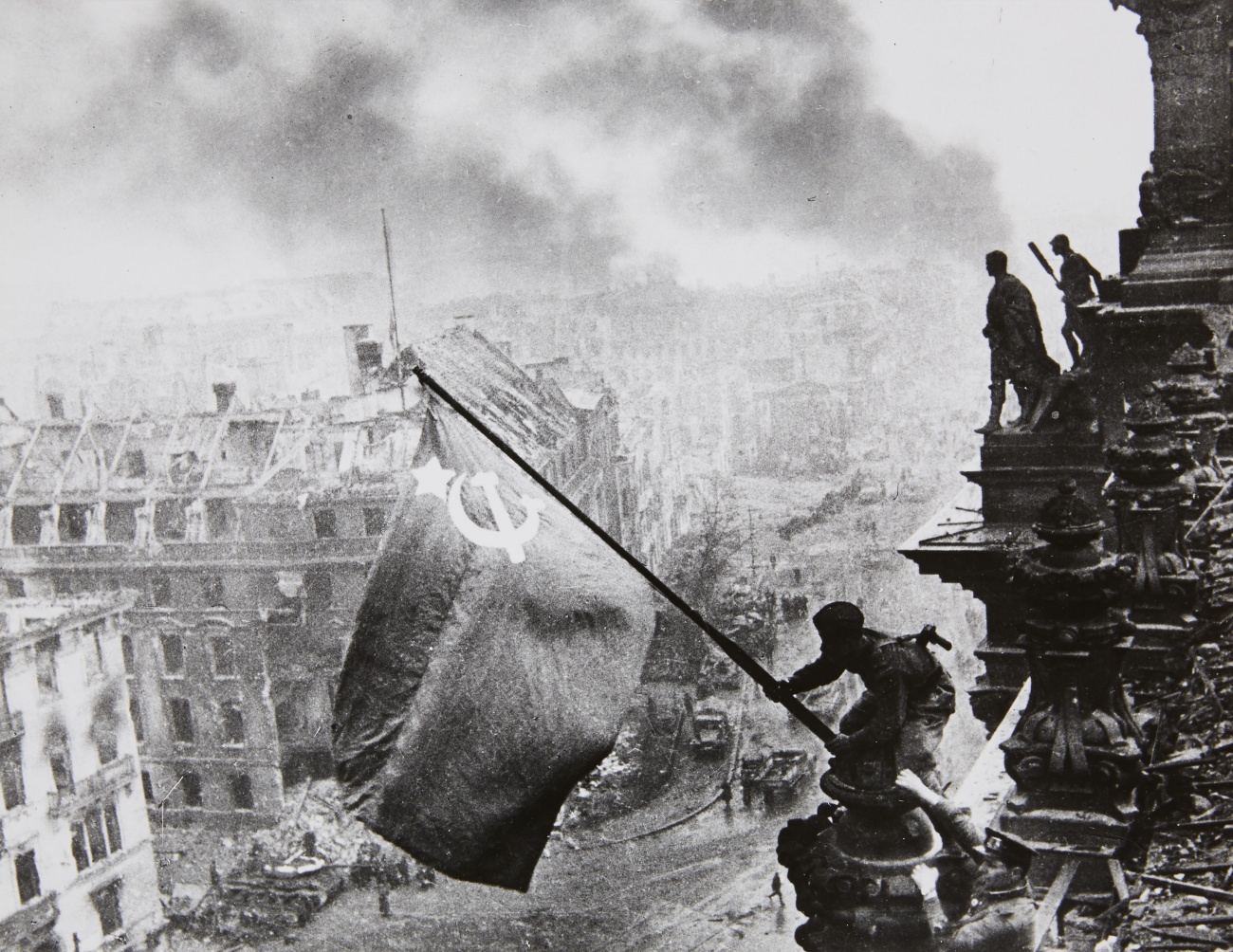Jewgeni Chaldej
Sowjetische Fahne auf dem Berliner Reichstag, 2. Mai 1945 (Soviet Flag on the Berlin Reichstag, 2nd May 1945)
1945
Gelatin silver print, printed c. 1990. 22.5 x 29 cm. Signed in pencil on the verso.
It was early morning on 2nd May 1945. I entered the Reichstag building. It was loud and I could hear Russians and Germans shouting everywhere. The cacophony hissed like a waterfall: The Germans were shocked at the arrival of the Russians, and the Russians were rejoicing. I entered wearing my navy uniform. A young, friendly looking soldier approached me. I had a red flag in my hand. He said: “Lieutenant, dawai, let's climb onto the roof with the flag.” “That's what I'm here to do” I said. So we went. All of the stairs had been destroyed. We finally reached the top of the building and the Reichtag was burning. All the heat and smoke gathered in the dome. The soldier said: “We should climb on to the dome”. “No”, I said “we'll breathe in the smoke and burn.” “Ok, then we'll try it here.” We found a long pole. I spent a long time looking for possible compositions. First I took a photo from the left, but it wasn't good. I wanted to show a section of Berlin. Then I said: “Guys, go and stand over there and raise the flag.” There were three soldiers. One from the Ukraine, one from Machatschkala in Dagestan and one Russian. There were small, red cloths tied all over the Reichstag building. Our soldiers, men and women, had all climbed onto the roof to tie them there. But I had my flag with me. I shot the entire film, 36 pictures. - I flew out to Moscow in the night of 3rd May, and the photo was published straight away. Several months later someone noticed that the soldier supporting the flag pole at the bottom was wearing watches on both wrists. I was charged with editing out the one on his right hand.” (cit. from: Chaldej, in: Ernst Volland/Heinz Krimmer (ed.), Von Moskau nach Berlin. Bilder des Russischen Fotografen Jewgeni Chaldej, Berlin 1999, p. 64). The photograph shouldn't show that Russian soldiers stole the watches of the fallen, and since Chaldej was a soldier himself he didn't see any problem in editing his photographs for propaganda reasons.
Literature
Ernst Volland/Heinz Krimmer (ed.), Von Moskau nach Berlin. Bilder des Russischen Fotografen Jewgeni Chaldej, Berlin 1999, ill. p. 65

